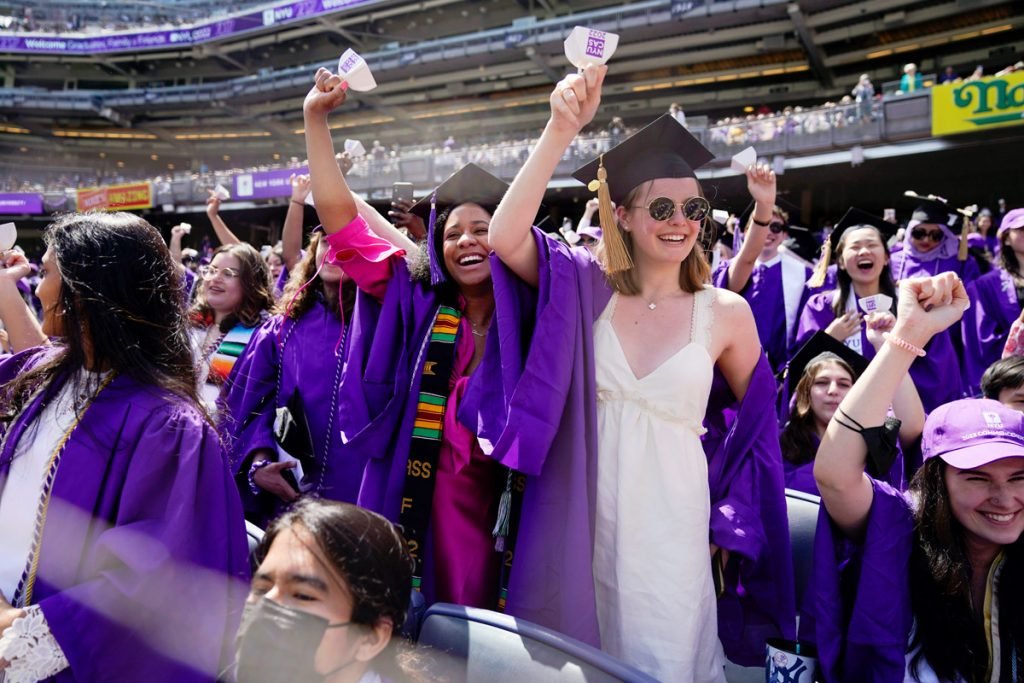[ad_1]
After years of speculation, millions of student loan borrowers received some excellent news today.
The Biden administration announced it would forgive $10,000 of federal student loan debt for borrowers who make less than $125,000 annually and households with an annual income of $250,000 or less.
Borrowers who went to college on Pell Grants may be eligible to receive $20,000 in forgiveness. Pell Grants don’t have to be repaid but are given based on financial need.
The payment freeze has been extended again until Dec. 31, 2022, too.
Biden’s plan also includes a change that allows borrowers to protect more of their income from student loan payments. Undergraduate borrowers will be able to cap their monthly payments at 5% — down from 10% — of their monthly income.
“Earning a college degree or certificate should give every person in America a leg up in securing a bright future. But for too many people, student loan debt has hindered their ability to achieve their dreams — including buying a home, starting a business, or providing for their family,” U.S. Secretary of Education Miguel Cardona said in a statement announcing the decision.
The DOE said more details on how borrowers can claim this student loan relief will be released in the coming weeks. An application will be available no later than the end of 2022 — when the pause on federal student loan repayments ends.
Nearly 8 million borrowers are likely to receive automatic forgiveness based on known income data, according to DOE.
Contents
What Should You Do if You Still Have Student Loan Debt?
If you qualify for the DOE’s forgiveness plan and have less than $10,000 in student loan debt, then congratulations! Say goodbye to your student loans forever.
But with the average student loan debt coming in at just over $28,000, many borrowers will still have payments to make in the coming years.
If you’re in that situation, the good news is that you just received a huge jump start to pay off the rest of your loans. Think of it as a momentum boost — along with continued forbearance — to get you closer to getting rid of your student debt for good.
Here are some ways to keep that momentum going:
1. Make sure you have an emergency fund
When emergencies pop up, and you know they will, an emergency fund allows you to avoid putting those expenses on a high-interest credit card or using the money you were going to put toward your student loans.
2. Lower your interest rates
Federal loans already have low interest rates — around 3% to 5% — so refinancing won’t make a huge difference. You could save money by consolidating or refinancing private loans though. Before you consolidate or refinance federal loans, make sure you understand the potential impacts.
3. Make a specific repayment plan
Consider the debt snowball method where you prioritize the loan with the smallest balance, then move to the next smallest when that one is paid off. Or think about the debt avalanche plan where you start with your highest interest loan. You focus on putting extra payments toward that loan first, then once it’s paid off, you focus extra payments on the loan with the next highest interest.
4. Make sure you’re on a budget
Any budgeting method can be great but a zero-based budget is especially helpful for paying off debt. The zero-based budget model allows you to prioritize your expenses. Using your income, you’ll go down your list of expenses, “paying” all of them until you’re at zero. You know what you have left over and give every dollar a job. You can put debt as high on your list of priorities as you want and contribute more if you have extra money left over.
5. Get a second job
If you’re really motivated to pay off those student loans, then a side hustle might be in your future. There are plenty of creative ideas out there – from rideshare driver or bartender to transcriptionist or fitness instructor.
6. Cut expenses
If you have a budget — and you should! — you know the areas where you tend to spend or over spend the most. Where can you cut back? Is it fewer restaurant visits? Cutting the gym membership and simply exercising outside? Cutting back on streaming services?
7. Pay extra
Yes, federal student loan payments are paused until Dec. 31 but so is the interest. This is a great time to make up ground and make payments anyway. If you have extra money left over at the end of the month, put it all toward your student loan debt. Even better, plan ahead and try to make extra payments — even if it’s just once a year. That will go a long way toward dropping your balance and helping you get rid of those student loans for good.
Robert Bruce is a senior writer for The Penny Hoarder.
[ad_2]

